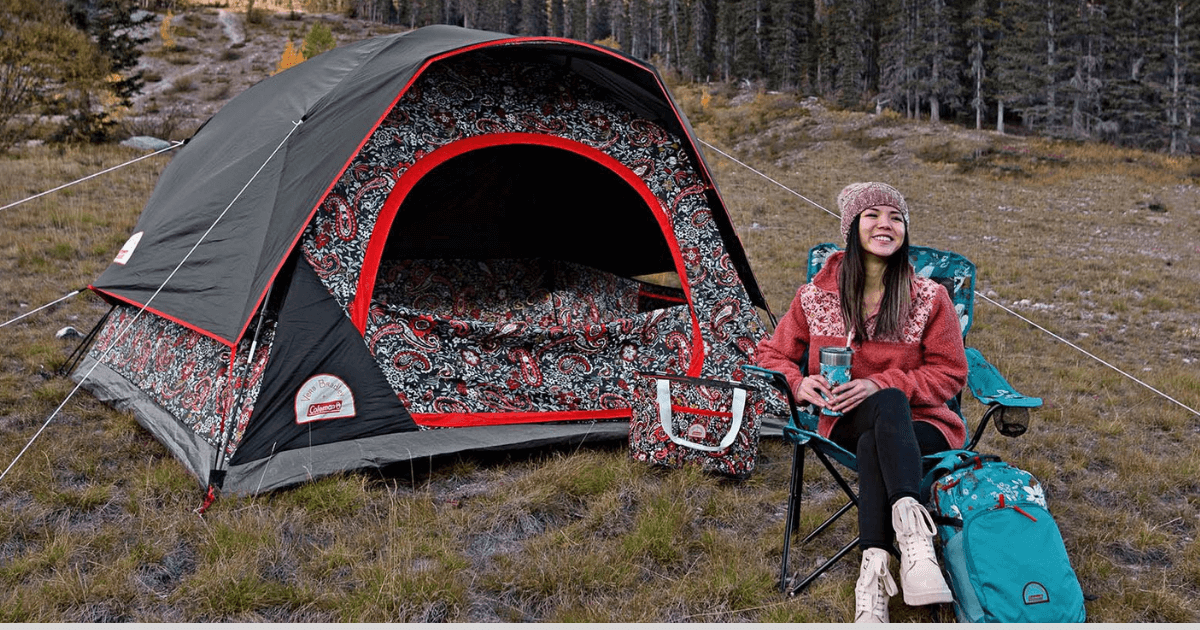Collaborations Stretch Brand Boundaries

Boundary-stretching collaborations are shining a new light on brands as they work to extend their reach.
Collaborations aren’t new, but brands are increasingly using them to expand in new and (often unexpected) directions. In some cases, it’s a question of simple math—the collaborations potentially double a brand’s exposure by attracting not only their core customers but also those completely unfamiliar with it.
For example, Vera Bradley—best known for bags featuring elongated diamond quilting—brought its designs to Newell Brands’ Coleman four-person tents, camping chairs, and other products, gaining end-cap displays at Target in the process. Additionally, the company’s designs have been transferred to the time-honored Tupperware brand’s snack cups, sandwich keepers, and water bottles in a move that boosts visibility for both brands.
“Our collaboration partnerships that we’re doing are really about customer acquisition, reaching out to them and expanding the tribe,” said Vera Bradley CEO Robert Wallstrom, whose company also has had licensing deals with Warner Bros.’s Harry Potter franchise and Disney. “It gets a lot of new customers to see it as well as think about things like Tupperware. That’s a way to get new customers into brand, especially with people might not be thinking about us as a bag business, but love the pattern and brand. It is a new way to join.”
In taking full ownership of the Karl Lagerfeld label, G-III Apparel enlisted the support of model/actress Cara Delevingne—a close friend of the late fashion designer—to develop the “Cara Loves Karl Loves Cara” capsule collection made from sustainable materials. The offerings launch first at New York Fashion Week (Sept. 8-12), followed by Dubai, Milan, and Paris.
“Marketing investments in our brands have contributed to building significant businesses as well as creating wider consumer awareness and great brand equity,” said G-III CFO Neal Nackman.
“Collaborations are an opportunity to tap into a slightly different market and customer,” said Anne Bradford, commercial director at Poetic Brands, which worked with e-commerce retailer ASOS last year on a Space Jam-themed collaboration. “There are certain products that can be for everyday use, and to elevate them and give them a point of difference can only be good for both brands.”
In many cases, the collaborations are available for a limited time or in limited quantities, which create a sense of urgency for the consumer—something further fueled by social media, licensing industry executives said. For example, Walmart, which licensed author and food blogger Ree Drummond’s The Pioneer Woman brand for kitchenware, expanded the DTR agreement to include summer apparel (tops and dresses) only available in select stores.
Earlier this year, streetwear brand Supreme—known for its rabid fan base—fasioned Burberry’s trademark plaid into stylish track suits, puffers, and weatherproof trench coats. Supreme also paired with Kraft’s Mac and Cheese for a version containing macaroni shapes that, when combined, spell out “Supreme.”
“It’s all about telling a story and the more unexpected and unpredictable it is, the better,” a licensing executive said. “Consumers have grown to expect the unexpected, which helps drive buying decisions and forge potential bond with a brand.”




